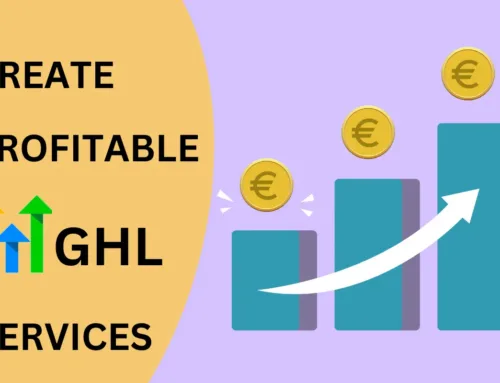Being an e-commerce seller can be a lot of fun. You can easily test out new products and move in fresh directions without needing any external validation. One thing it’s never going to be, though, is easy. There’s so much competition out there that you have to scratch and claw for every last sale — complacency is the first step on the road to ruin.
In addition to reminding you that you need to stay on top of your game in perpetuity, this should also motivate you to do everything possible to max out your profits right now. You never know when circumstances are going to turn against you, after all — beyond just striking while the iron is hot, you should try to make the iron hot by striking it.
In this piece, we’re going to look at 7 simple ways in which you can ramp up the profitability of your online store. I recommend folding some or all of them into your strategy, and saving the additional profits that result to cover you in the event of an emergency. Let’s begin.
1. Prioritize Customer Loyalty
People who’ve purchased from your store multiple times before are not only more likely than new customers to be receptive to your marketing — they’re also going to spend more money, order more frequently, and be far more inclined to recommend your business to others. Churn (losing old customers and needing to find new ones) is a major problem for sellers, and loyalty combats it in two distinct and powerful ways.
For all of these reasons, you should make customer loyalty a vital part of your overall business strategy. Focus on keeping your most valuable customers happy — offer them suitable discounts, request their feedback, and consider them first before you make any large changes to your store. This will help render your profitability more stable.
2. Sell Across Multiple Channels
It’s now possible to buy products through social media platforms. Someone can see a listing for a product on Facebook, for instance, and order it directly through a Facebook store without needing to be redirected to the seller’s website. Since this can be done very inexpensively, there’s almost always value in doing it — every order picked up through a fresh channel is an order that might never have happened otherwise.
Managing this is generally a matter of using a strong multi-channel e-commerce platform and/or using suitable tools such as Connect Orange to list product across different marketplaces, as well as making good use of social media options (selling through Instagram posts, for instance).
3. Cut Out Unnecessary Expenses
Profit is what you get when you subtract your costs from your revenue, meaning there are two obvious ways to increase it: boost your revenue, or reduce your costs. Cutting out expenses is often viable because sellers have to spend money on certain things, but there are invariably ways to get those things cheaper (or do without them entirely).
You should start by clearly noting all your regular expenses, and figuring out where else your money goes. You can get this all figured out through something like Wave accounting (which is completely free — if you have a paid accounting tool already in place, then be sure it offers enough to justify the price tag). Tally everything, and decide what you can and can’t cut. Once you’ve trimmed the fat, your profitability will rise.
4. Optimize Your Product Pricing
Charging the right amounts online is really tough, because many products have very thin profit margins. If you charge too little, you won’t make any money, but if you charge more than enough of your competitors, you won’t make any sales. This is why dynamic pricing is so useful. While monitoring the prices of your products across the Internet, it can periodically adjust your prices to match or slightly undercut those of your rivals.
A service like Prisync will do this for you. Simply add the products you want to optimize (and the competitors you want to beat), and it will handle everything for you. You’ll still want to keep an eye on the prices to ensure that everything’s going as it should, but otherwise you can relax a little, safe in the knowledge that you’re not being hugely outstripped by other sellers.
5. Boost Sales With Recommendations
One of the many things that took Amazon to the top of the e-commerce world was its unparalleled ability to provide product recommendations. When you have someone ready to place an order, it’s the perfect time to build up that value (much like a car salesman convincing someone at the last second to buy the chrome wheels and the seat covers).
Through implementing upselling (offering customers more high-end versions of the items in their cart) and cross-selling (offering them different products that are often bought alongside the items in their cart), you can expand some orders and make more money. OptinMonsters has a great list of viable tools (including its own), so check them out. If you use Shopify in particular, we have our own round-up of the best Shopify upsell and cross-sell apps.
6. Enhance Your Customer Service
We already looked at keeping loyal customers happy, but you should make some improvements to how you handle all your customers. Particularly when it comes to things like order and stock updates, customer service is an essential part of selling online, and it can so easily run out of resources and lead to people waiting for hours in phone calls.
The easiest way to bolster your customer service these days is to implement a mixture of live chat and chatbot support. You can use a chatbot to cover basic queries at all times of the day (very useful for picking up nighttime orders), and some human stuff to offer a more personal service when necessary. A service like Morph.ai will help you create a suitable chatbot, so see what you can achieve.
7. Offer Subscription Products
The subscription model has gained a lot of popularity in the e-commerce world, with businesses like Dollar Shave Club and Loot Crate showing just how profitable it can be. The concept is simple: you offer some type of product or product set every month, and encourage people to subscribe with a monthly fee to receive each monthly item.
This is great for profit for three reasons: people love being surprised by deliveries, “random” or “assorted” boxes allow you to offload unused items, and having consistent monthly income will make it easier for you to improve the business and invest in overall improvements. You can easily set up such a product using a service like Cratejoy.
Ready to start selling more, spending less, and keeping more of the profit? Follow these 7 steps (or as many as you’d like to), and you’ll no doubt see a satisfying increase in your company’s overall profitability.




